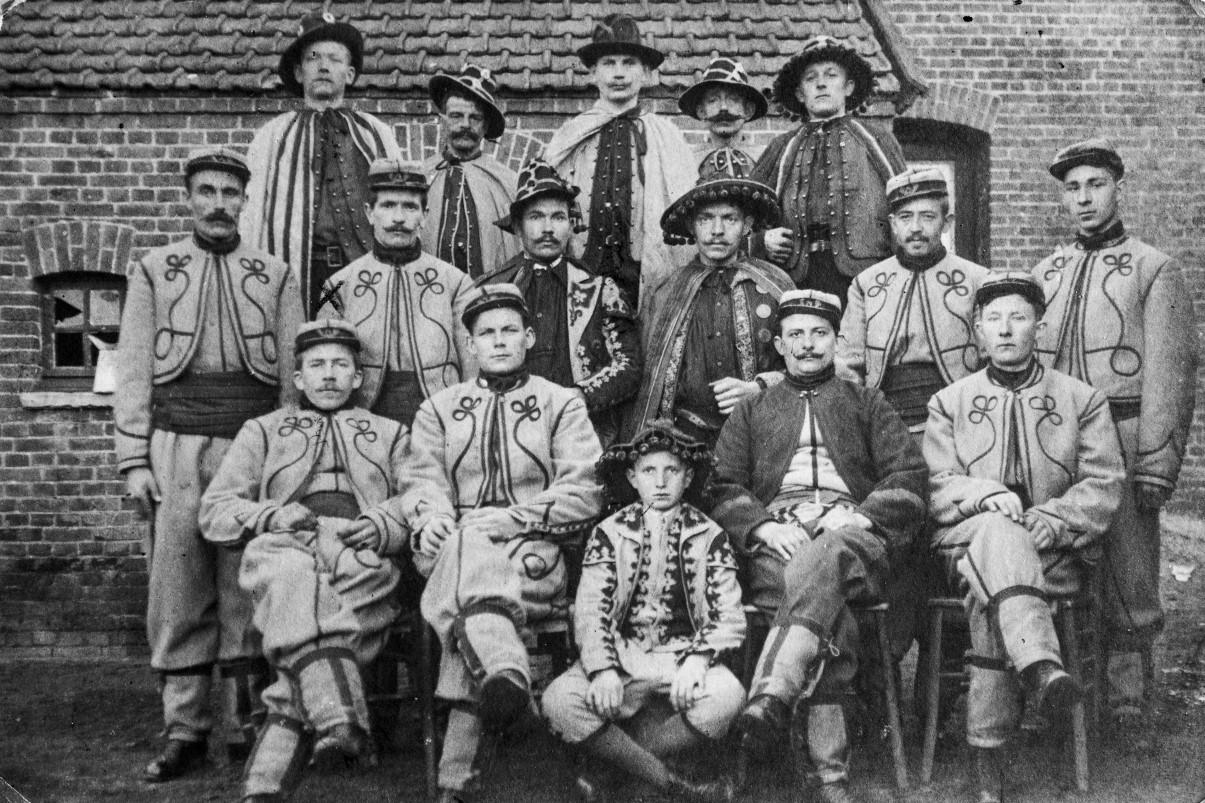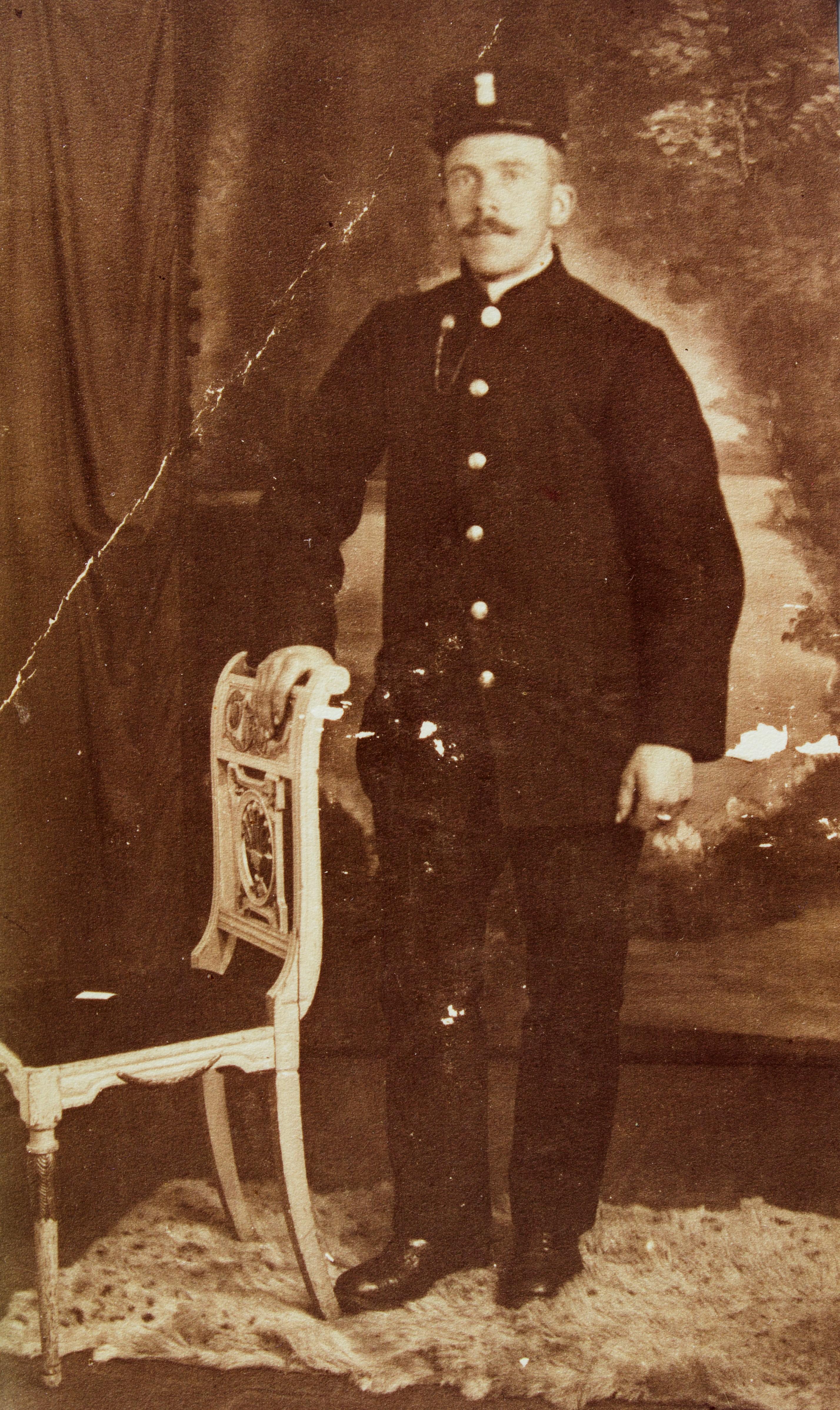
6 minute read
A VERNACULAR PROJECT André Bergmans
The RPS Benelux Chapter HISTORY OF PHOTOGRAPHY
André Bergmans
Like so many of us I had to redefine and
reschedule my activities when Covid-19 hit. One of the things on my to-do list was rearranging my family photos. I got help from eleven cousins and a few aunts who are in in their 90s. My main question during this process was why these old photos are so fascinating and intriguing even if it does not concern your own family.
VERNACULAR PHOTOGRAPHY
The common denominator in all the definitions of vernacular photography is that the subject in the photo relates to everyday domestic family life and common things. These photos often have a practical purpose as they are not intended as fine art. These photos are often created by unknown amateur photographers and as a result may have serious flaws like stains, wrong crop, innocent by-passers in the image, fingers of the photographer, grain and scratches, light leaks, motion blur, wrong focus and poor development just to mention a few. Still, they were kept….
FOUND PHOTOGRAPHY
Vernacular photography is not intended as art. So why does it happen that these photos end up in collections, exhibitions and photo books and there is a large community of collectors and enthusiasts that are chasing flea markets, charity shops or simply pick up photos from dump yards and the street? What happens in most cases when found vernacular photos end up in an exhibition is that the photos were systematically collected with a purpose in mind and, more importantly, were taken out of their original context and put into a new context.
FASCINATED
Why are these old vernacular and found photos and even newer but ‘unknown’ photos so fascinating? I did a little field research by posting some old vernacular photos into a large Facebook group of enthusiasts for old photography and specifically asked for responses. I found at least three partial answers.
GLORIOUS IMPERFECTION
We are so spoiled by perfect photos these days that the sometimes clumsy imperfections of old photos become appealing to us. Imperfect photos taken today are not kept anymore and literally never see the light of day.
NOSTALGIA
Nostalgia has a strong power. Nostalgia in the sense of a sentiment for the past, a longing for the ‘good old days’, the pain of time passing by too quick and a desire to time travel.
HISTORY
People interested in history find a lot of material in these old photos and are studied and analysed to understand the past. The search for the story behind the photo and its context is key.
So, the mixture of aesthetic beauty, sentiment for the past and more scientific interest in history does give these photos a strong appeal to many of us.
Page 49 | My dad in the Dutch army in training as an ack-ack repair engineer in the UK (1946). The back side of the photo reads… “to my dear sister (Netty) from Jan” Page 51 Granddad as a young man. Year unknown. They still needed a chair to sit or stand still because of the longer exposure times and had a particular taste for backdrops

WHAT DID I LEARN?
The project with my cousins to create a family photo album is still ongoing. I have created two photo books so far. Apart from the family history and family bonding I learned a few things about photography and got some new ideas as well.
First, I learned how to read photos even better and look at every detail to understand the story and background. A second eyeopener was to understand what makes a vintage photo really a vintage photo and how to create one myself. A third topic I learned is a bit more about the history and technique of photography. Last but not least the awareness that you can also create images by using found material as analogue or digital input and still be the original creator of the final result. This could easily trigger a next project.
KNOKOLIEPLOEG
We see a group of people, probably three couples (page 53). They apparently are having a good time with a drink. In front we see a sign hanging over the table with a date: October 10th 1920 and a word ‘De Knokolieploeg’ - a Dutch word which cannot be found, as such, in any dictionary. ‘Knokken’ in Dutch means to fistfight. ‘Olie’ means oil and ‘Knokolie’ is a nickname for Dutch jenever (gin) with a negative aggressive impact. I would translate ‘Ploeg’ in this case as a gang of thugs. So, the whole text means ‘The Fistfight-Oil Gang’ (Gin Gang). Apparently they gathered often and decided that the photographer should make a picture and that a sign with a date and title was appropriate. The ladies have a small spoon with their glasses as they added sugar to their (lemon) jenever. The gentlemen do without but smoke cigars. By the jewellery and watches we can tell these people are at least not poor. The couple at the top are the grandparents of one of my cousins.


Above: The Fistfight-Oil Gang, couples drinking jenever (1924) Under: My aunt doing laundry as a child with her mini washtub (1931)
LAUNDRY
16th May 1931 Utrecht (Netherlands). My aunt as a child, playing with her mini wash tub and ironing her clothes. I noticed that in many of these photos all the toys and dolls were deliberately photographed. Girls toys and boys toys were different and preparing for the future and no questions asked about that of course.
DRAMA CLUB
During the first world war the Netherlands was a neutral country. My grandfather (first row in the middle) served in the Dutch army and guarded the borders with Belgium. Many refugees from Belgium entered the country but also spies and smugglers. In the second photo we see my grandfather fully on the left side in the front row. This photo has been a mystery as the people wear the uniform of the Papal Zouaves but these did not exist anymore around 1916-1918. The mystery was resolved when we found the original which proved to be a picture postcard. On the back side my grandfather had written something like: “Dear family. It may surprise you to receive a postcard from my side as I have not given any sign of life while I have not forgotten your hospitality. But if one has to go to work every day and is involved in all kinds of banter one does not have too much time available… This picture is about the drama club where I have a modest role as well… Best regards…“ (1938?). So, my grandfather was in a local drama club…


Page 54 | Above: Granddad in the army during the first world war (1916-1918 for him) Under: Granddad (front row left) in the local drama club in a piece on Papal Zouaves (1938)
Page 55 | Grandad in his younger years. Year unknown. One photo shows him in his Dutch railways uniform. He was a railway man all his life










